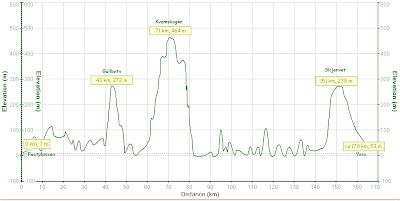Norway is a beautiful country, with its high mountains and deep fjords it offers endless opportunities for fun and activites. Its low population means that you really get a sense of space and lacks all the problems that other European countries have related to overpopulation. They have a high standard of living and exercise a work – life balance that would be perceived as slack in Britain. It was voted to the best place to live in the world by the United Nations this year but something fundamental is missing and with frustrations at work I have realised its time to move on.
What will it mean for me work wise?
The divide between Norwegian and British work ethics is as large as the North Sea itself. It is going to be interesting to find myself back in the British working system. I suspect that it is here that I will experience the largest inverse culture shock but at the same time it is an environment that I am eager to get back to.
A deadline will be a deadline. Good mobile phone etiquette in meetings. Efficiency. Appropriately dressed colleagues. Lunch at lunchtime. Cake only on special occasions. Most importantly and probably the biggest driver in my move is that the working language will be English. I will however miss the mass evacuation from the office just because it’s good weather.
What will it mean for me in my free time?
I will miss the snow! I own enough pairs of skiis to challenge any Norwegian and I love the easy access to the downhill slopes and cross country trails. Scotland may offer a few soggy days at the Lecht if I’m lucky and I’m staying optimistic to getting out touring but it won’t compare to the Sunnmoere Alps.
In return though I will have access to great mountain biking, Munroes on my doorstep and the nearest windsurf location is only 9 miles from the house at Loch Skene. There is less single pitch sports climbing (of which I have enjoyed in Bergen) but there will be access to long mountain routes.
What does it mean for me socially?
Norwegian society is extremely family orientated which is good for families but makes it quite closed to outsiders. To make matters worse I am not fluent in Norwegian which has made it quite difficult to break into a Norwegian circle of friends, (although I have been told that even if you are fluent the door still remains firmly shut). Despite this I do have some good Norwegian friends – admittedly they are more like Norwegian expats - but mostly I have socialized within a small circle of expats of varied nationalities, some of whom I wouldn’t have met in other circumstances.
There’s going to be more opportunities socially in Aberdeen. I already have a friend base in Aberdeen, some work in the same building as I will and others live only a couple of streets away.I can join clubs and take classes and not have to worry about having to speak bad Norwegian or be embarrassed about speaking English. I will be able to speak English full flow and really be myself!
What does it mean for me personally?
I will get to see my family and my new born niece more frequently. It takes the same to travel home but with the flexibility of being able to jump in my car at a moments notice I can nip home for unexpected events at the cost of a tank of fuel. The down side is John is staying in Bergen for the time being so I only get to see him at weekends. This is the toughest part of all of this.
As I write this I am sat in Bergen airport with John waiting to hear news on my delayed flight to the UK. I have sold my flat which ended up a very unpleasant experience (see Johns blog) and my belongings are already waiting for me in Aberdeen for when my flat becomes available in April. Although this is really my flight out of Norway it doesn’t feel like an ending. Until John joins me in Aberdeen I get the best of both worlds – I will be living in Aberdeen and commuting back to Bergen at weekends.

















 I took part in the Skarverennet this weekend, a 38 km cross country ski race that runs every year from Finse to Haugastøl. We took the train from Bergen at 8am and we were each full of anticipation for different reasons. I knew I could make the distance physically as I had particpated in the Birkebeinerennet (54 km cross country ski race) last year but I was most worried about the waxing of my skiis.
I took part in the Skarverennet this weekend, a 38 km cross country ski race that runs every year from Finse to Haugastøl. We took the train from Bergen at 8am and we were each full of anticipation for different reasons. I knew I could make the distance physically as I had particpated in the Birkebeinerennet (54 km cross country ski race) last year but I was most worried about the waxing of my skiis.










